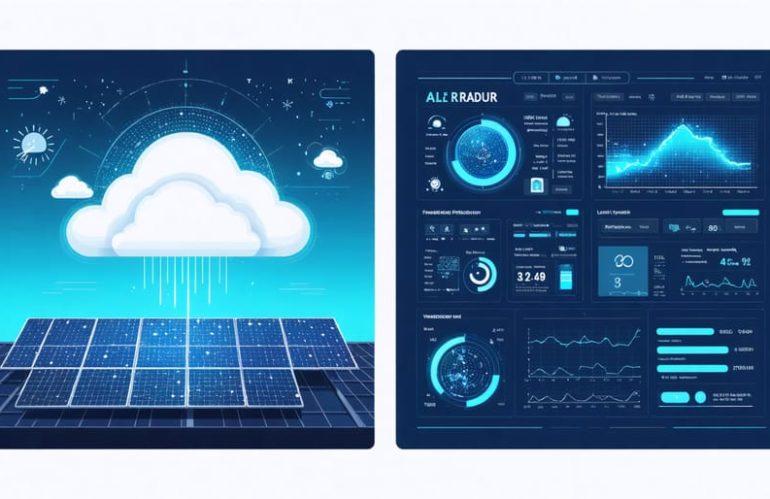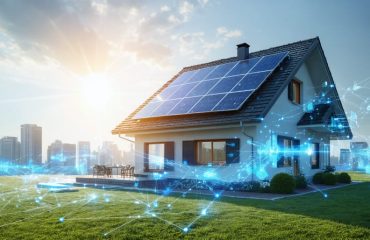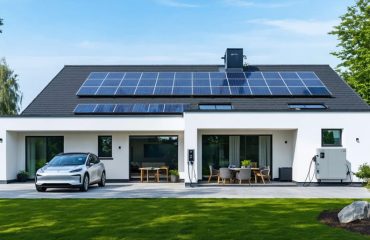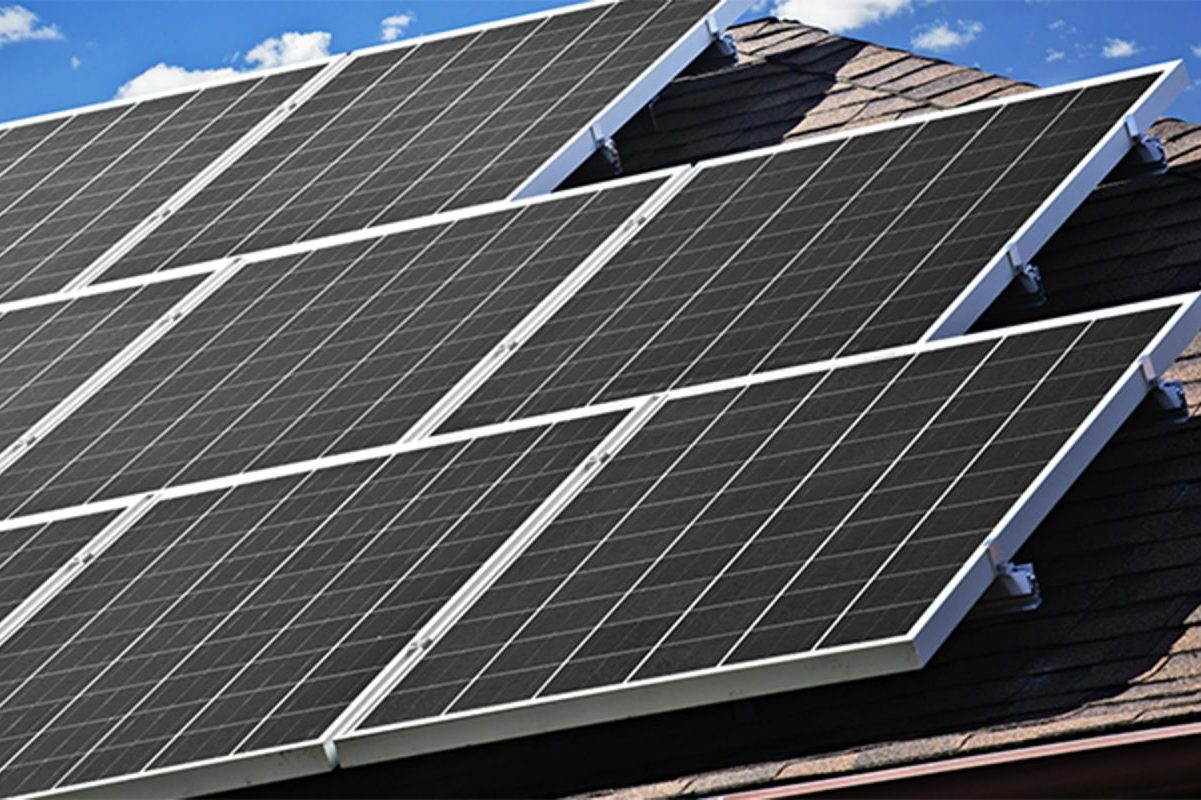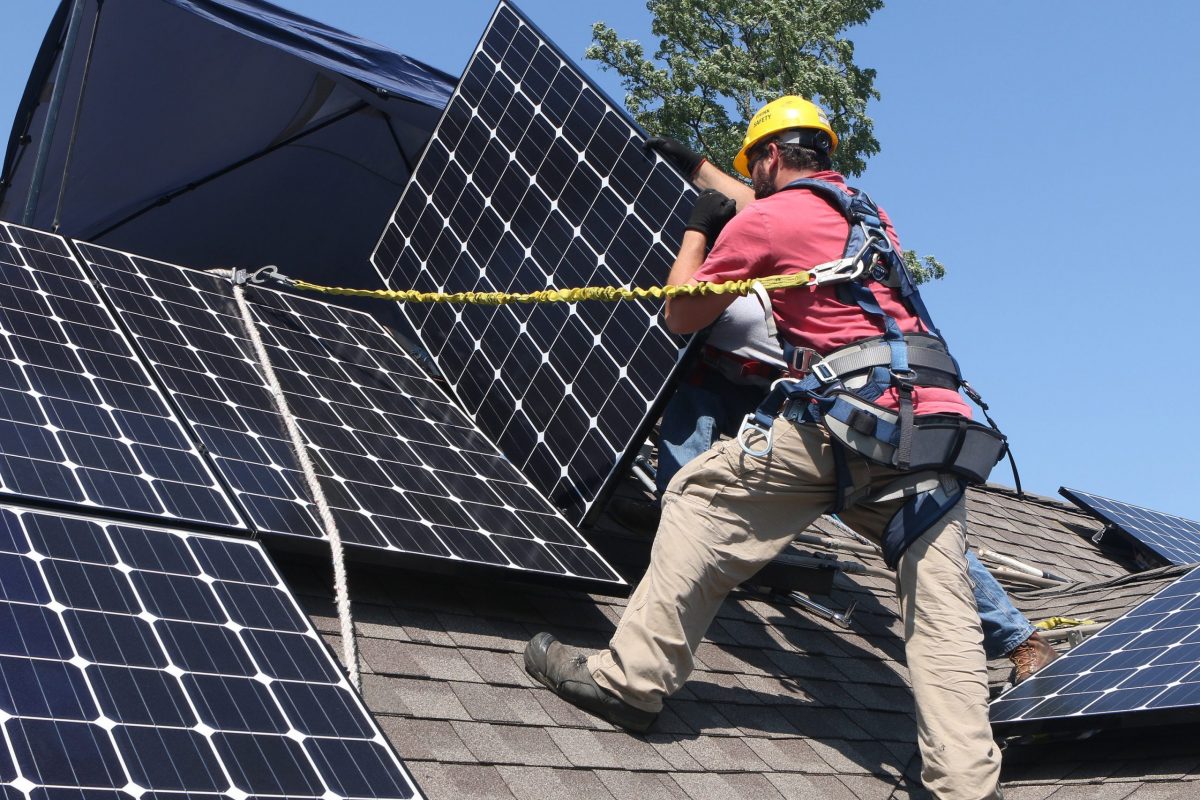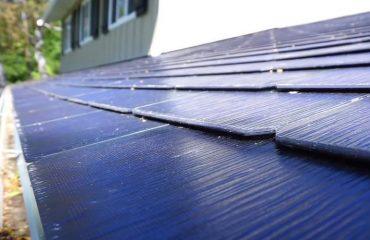AI forecasting software is revolutionizing how homeowners maximize their solar energy investments. By analyzing weather patterns, energy consumption habits, and grid demands in real-time, these intelligent systems deliver up to 25% more efficient solar power utilization than traditional monitoring methods. Advanced machine learning algorithms now predict solar panel performance with remarkable accuracy, helping homeowners optimize their energy usage and reduce utility bills with unprecedented precision.
Modern AI forecasting platforms integrate seamlessly with existing solar installations, providing homeowners with intuitive dashboards and actionable insights. These systems not only forecast optimal times for energy consumption but also alert users to potential maintenance issues before they become costly problems. For environmentally conscious homeowners, this technology represents a significant leap forward in sustainable living, offering both environmental benefits and substantial cost savings.
Whether you’re considering solar installation or looking to enhance your existing setup, AI forecasting software provides the smart optimization tools needed to maximize your renewable energy investment.
Why Solar Power Needs Smart Forecasting
The Solar Prediction Challenge
Accurately predicting solar energy production involves analyzing numerous variables that affect both generation and consumption. Modern predictive analytics for solar energy considers weather patterns, including cloud cover, temperature, and seasonal changes. These systems also track your home’s unique energy usage patterns, such as peak consumption times and standby power needs.
Key factors include your roof’s orientation, shade from nearby structures or trees, and local climate conditions. Your household’s daily routines, appliance usage, and seasonal variations in energy consumption also play crucial roles. AI forecasting software processes these variables in real-time, creating accurate predictions that help optimize your solar system’s performance.
By understanding these patterns, the software can suggest the best times to run energy-intensive appliances, store excess power in batteries, or sell energy back to the grid, maximizing both environmental benefits and cost savings.
Beyond Weather Apps
While traditional weather apps focus on general conditions like temperature and precipitation, AI forecasting software takes a much more sophisticated approach. These systems analyze multiple data streams simultaneously, including historical weather patterns, real-time sensor data, and satellite imagery, to create highly localized predictions specifically tailored to solar energy production.
What sets AI forecasting apart is its ability to learn and improve over time. By constantly comparing its predictions against actual outcomes, the system becomes increasingly accurate at predicting cloud cover, solar intensity, and potential disruptions to energy generation. This adaptive learning means homeowners can better plan their energy usage and storage strategies.
Additionally, AI forecasting tools can predict energy production down to specific times of day for individual solar installations, considering unique factors like roof angle, nearby obstacles, and local microclimate conditions. This level of precision helps homeowners maximize their solar investment and optimize their energy consumption patterns.
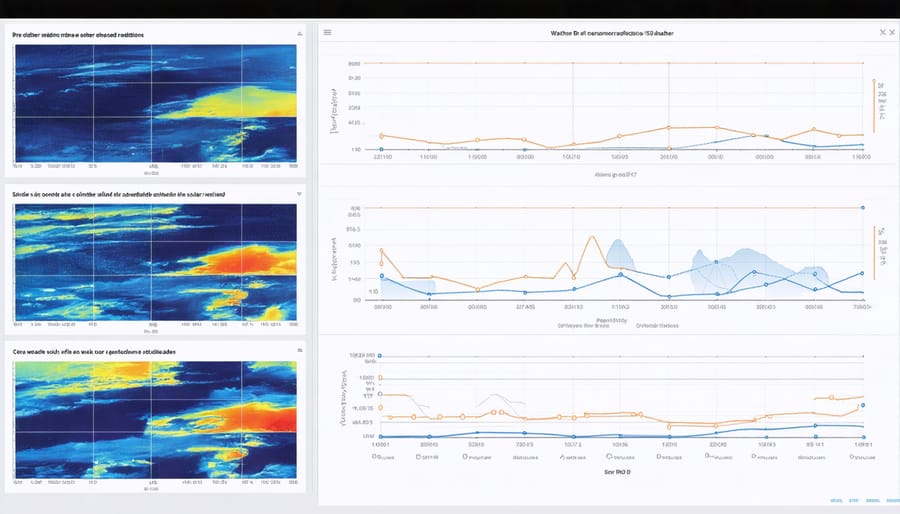
How AI Makes Your Solar System Smarter
Learning Your Home’s Energy Pattern
AI forecasting software begins by studying your home’s unique energy fingerprint – the way your household consumes power throughout the day, week, and season. Like a detective piecing together clues, the software analyzes various factors that influence your energy usage patterns, including your daily routines, appliance usage, and even local weather conditions.
The learning process typically takes about two to four weeks, during which the AI observes when you use the most electricity, identifies peak consumption periods, and recognizes recurring patterns. For example, it might notice that your energy usage spikes during weekday mornings when everyone’s getting ready for work and school, or that your air conditioning runs longer on sunny afternoons.
This sophisticated analysis goes beyond simple time-of-day tracking. The AI considers multiple variables simultaneously, such as occupancy patterns, temperature fluctuations, and seasonal changes. It can even detect when you’ve added new energy-intensive appliances or changed your usual routines.
What makes this technology particularly powerful is its ability to adapt and improve its predictions over time. As it gathers more data about your household’s energy habits, the AI becomes increasingly accurate at forecasting your future energy needs. This learning process is continuous, ensuring that the system stays in tune with your changing lifestyle and energy requirements.
By understanding these patterns, the AI can help you make smarter decisions about when to use solar power, store energy in batteries, or draw from the grid, ultimately maximizing your energy efficiency and reducing costs.
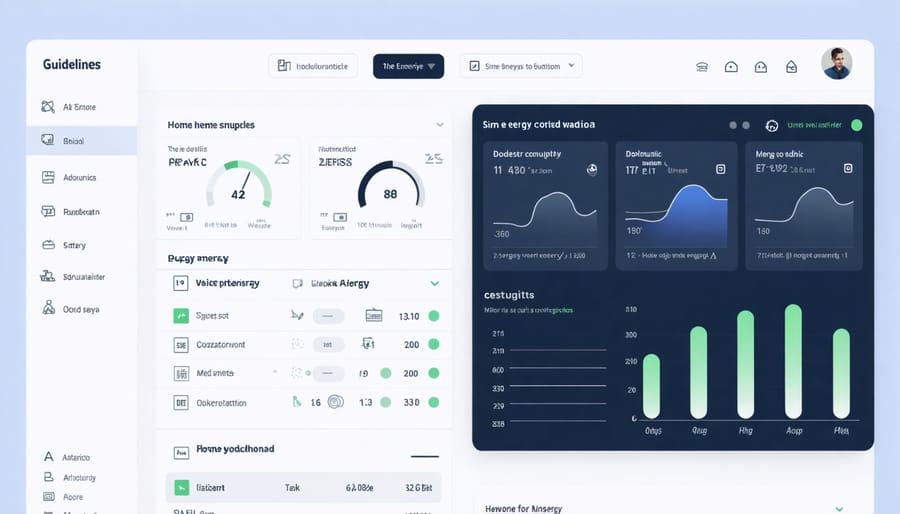
Real-Time Optimization
One of the most remarkable features of AI forecasting software is its ability to adapt and learn in real-time. Unlike traditional forecasting methods that rely on static data, AI systems continuously monitor and analyze current conditions to refine their predictions. This dynamic approach to intelligent energy management ensures that your solar system performs optimally regardless of changing weather patterns or energy consumption habits.
The software processes multiple data streams simultaneously, including local weather updates, historical performance data, and current energy usage patterns. When conditions change – such as an unexpected cloud cover or a shift in household energy consumption – the AI quickly adjusts its forecasts and recommendations. This real-time optimization helps maintain consistent energy production and usage efficiency throughout the day.
For homeowners, this means more reliable energy production estimates and better-informed decisions about when to use major appliances or store excess energy. The system can automatically adjust to seasonal changes, learning from past performance to improve future predictions. It can even anticipate potential issues before they affect your system’s performance, allowing for proactive rather than reactive management of your solar investment.
This continuous learning process means the software becomes more accurate over time, adapting to your specific location and usage patterns to provide increasingly precise forecasts and recommendations.
Real Benefits for Your Home
Better Battery Management
AI forecasting software revolutionizes how homeowners manage their energy storage systems, making solar power more reliable and cost-effective than ever before. By analyzing weather patterns, historical usage data, and real-time energy consumption, these intelligent systems help optimize battery storage efficiency while extending battery life.
The software predicts when you’ll need more power and when you can store excess energy, automatically adjusting charging cycles to match your household’s unique patterns. This smart management means you’re less likely to draw expensive grid power during peak hours and more likely to have backup power when you need it most.
Think of it as having a personal energy manager that’s always working to save you money. The AI learns from your daily routines, adapting to seasonal changes and even special events that might affect your energy usage. For example, if the forecast shows cloudy weather ahead, the system will ensure your batteries are fully charged when sunshine is abundant.
What’s particularly exciting for homeowners is how this technology reduces battery wear and tear. By preventing unnecessary discharge cycles and maintaining optimal charge levels, AI forecasting can significantly extend the lifespan of your battery investment, potentially saving thousands in replacement costs over time.
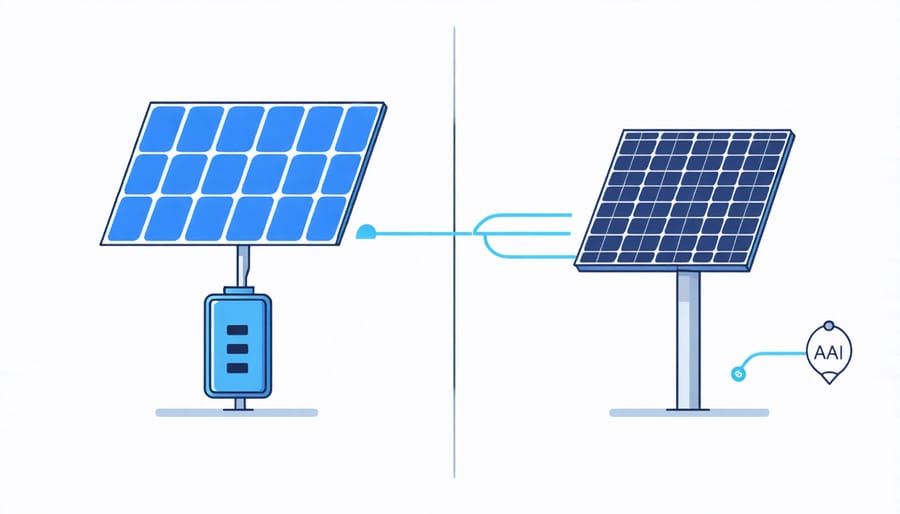
Lower Energy Bills
AI forecasting software can significantly reduce your monthly energy bills by optimizing how your solar system interacts with the power grid. By accurately predicting solar generation patterns, the software helps you maximize self-consumption during peak production hours and minimize reliance on grid power when rates are highest.
For example, when the AI predicts a sunny afternoon, it can automatically schedule energy-intensive activities like charging electric vehicles or running the dishwasher during peak solar production. This smart scheduling ensures you’re using your own free solar power instead of paying premium rates for grid electricity.
The financial benefits are substantial. Homeowners using AI forecasting typically see a 20-30% reduction in their monthly energy bills compared to traditional solar setups. This optimization becomes even more valuable in areas with time-of-use pricing, where electricity costs vary throughout the day.
Beyond daily savings, the software’s predictive capabilities help protect your investment by identifying potential system issues before they impact performance. Early detection of problems means faster repairs and consistent energy production, preventing unexpected spikes in your utility bills.
The system also provides detailed insights into your energy consumption patterns, empowering you to make informed decisions about your usage habits. With real-time data and predictive analytics at your fingertips, you can continuously refine your energy strategy to maximize savings year after year.
AI forecasting software represents a game-changing advancement for residential solar energy systems, making clean energy more reliable and cost-effective than ever before. By accurately predicting energy production and consumption patterns, these intelligent systems help homeowners maximize their solar investment while contributing to a more sustainable future.
The benefits are clear: reduced energy bills, optimized solar panel performance, and better energy management throughout the year. With AI-powered forecasting, you can make informed decisions about when to use appliances, store energy, or sell excess power back to the grid. This level of control and predictability transforms solar from a passive energy solution into an active tool for household energy management.
As solar technology continues to evolve, AI forecasting will become increasingly sophisticated and accessible. For homeowners considering solar installation or looking to upgrade existing systems, incorporating AI forecasting software is a smart investment that pays dividends both financially and environmentally. By embracing this technology today, you’re not just saving money – you’re joining a growing community of forward-thinking homeowners who are actively shaping a cleaner, more sustainable energy future.

